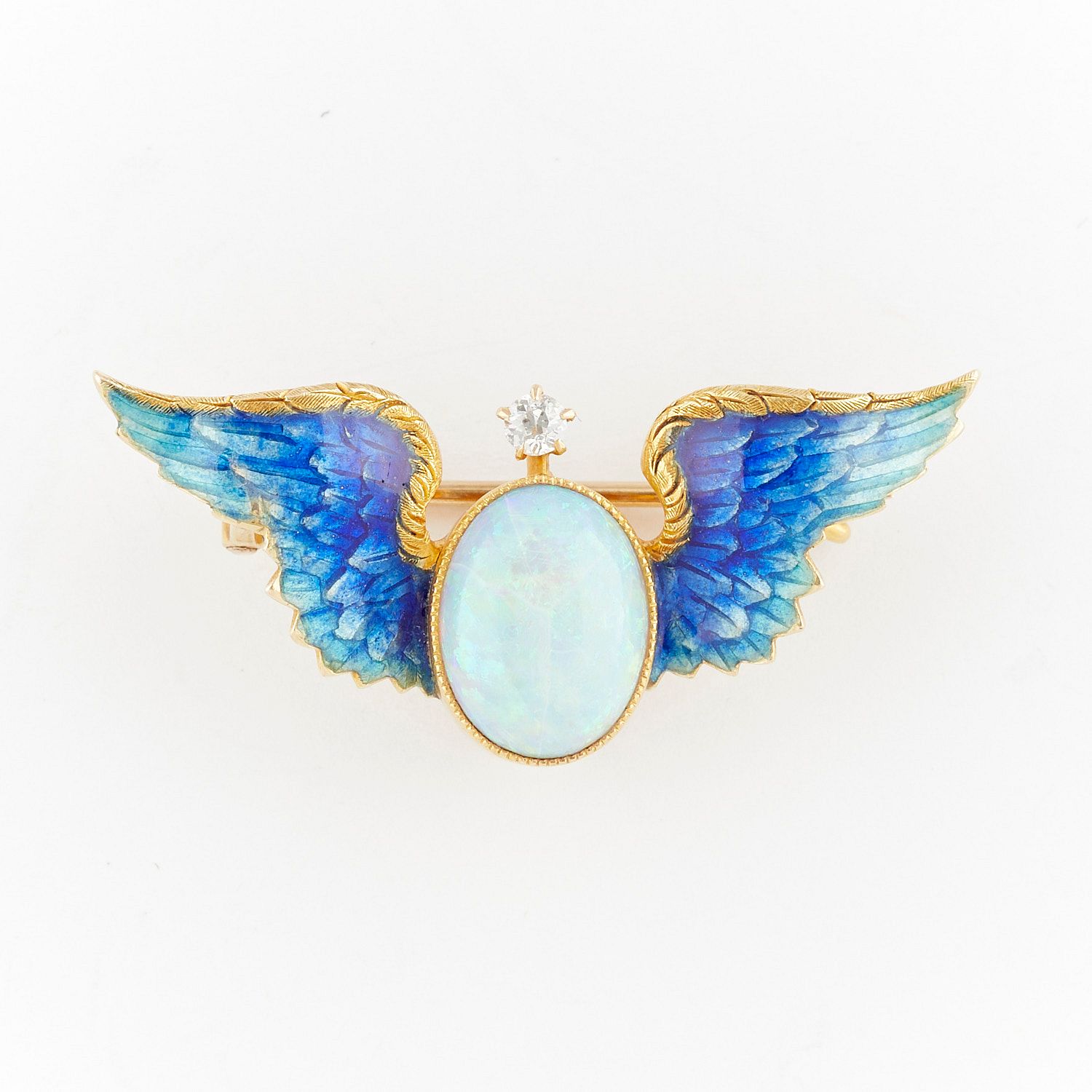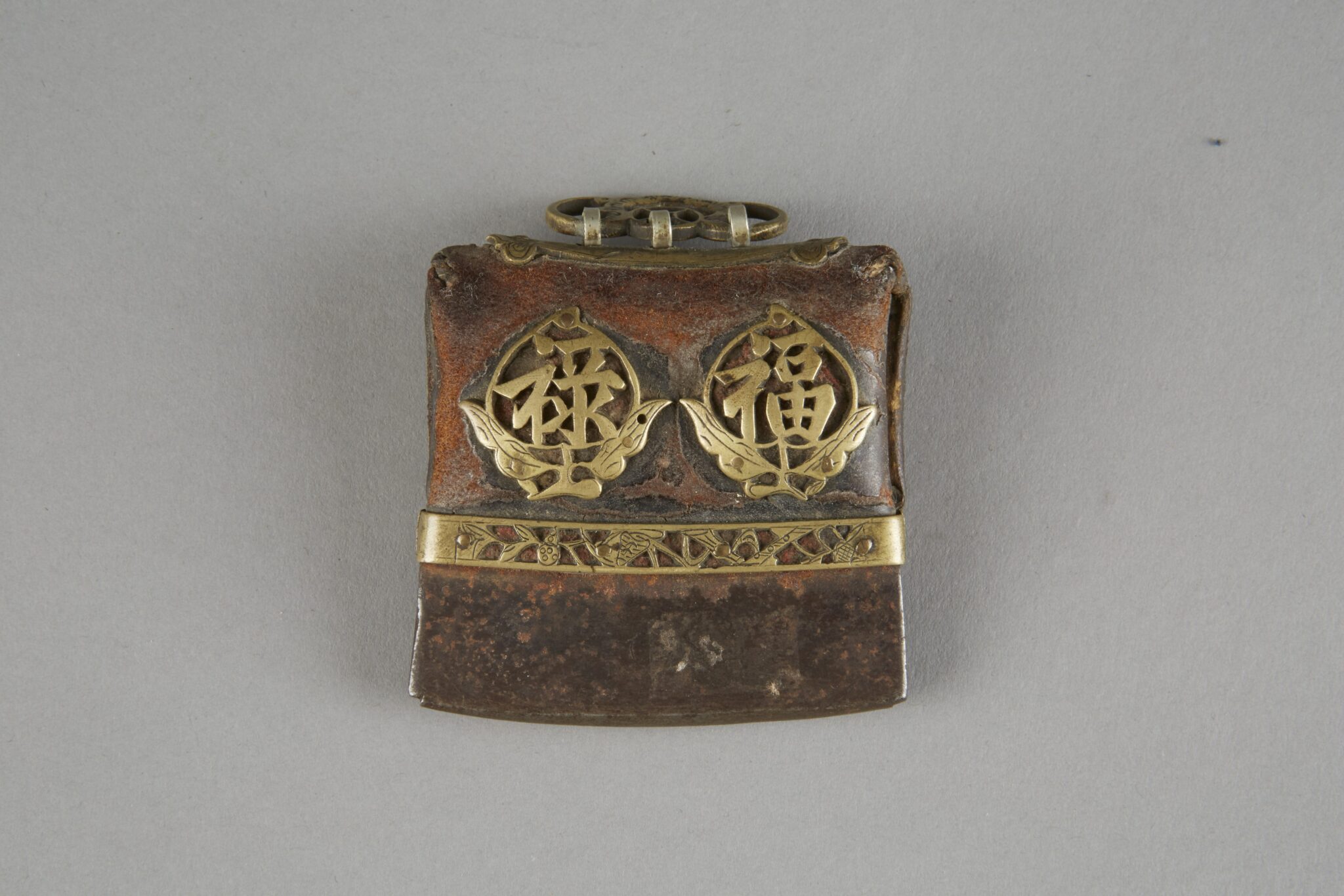
American Art Nouveau jewelry
Interested in selling a piece of American Art Nouveau jewelry?
We have received top dollar for American Art Nouveau jewelry. Auction is the best way to quickly and transparently get maximum dollar for your artwork.
Riker Brothers Art Nouveau in America
Revere Auctions is pleased to present a superb example of American Art Nouveau jewelry in our January Jewels: Fine Art & Luxury Goods auction. Lot 189 is a Riker Brothers winged opal and enamel brooch with a hidden bale for pendant conversion. The diminutive pin is an encompassing example of the jewelry techniques and styles that defined the Art Nouveau movement.
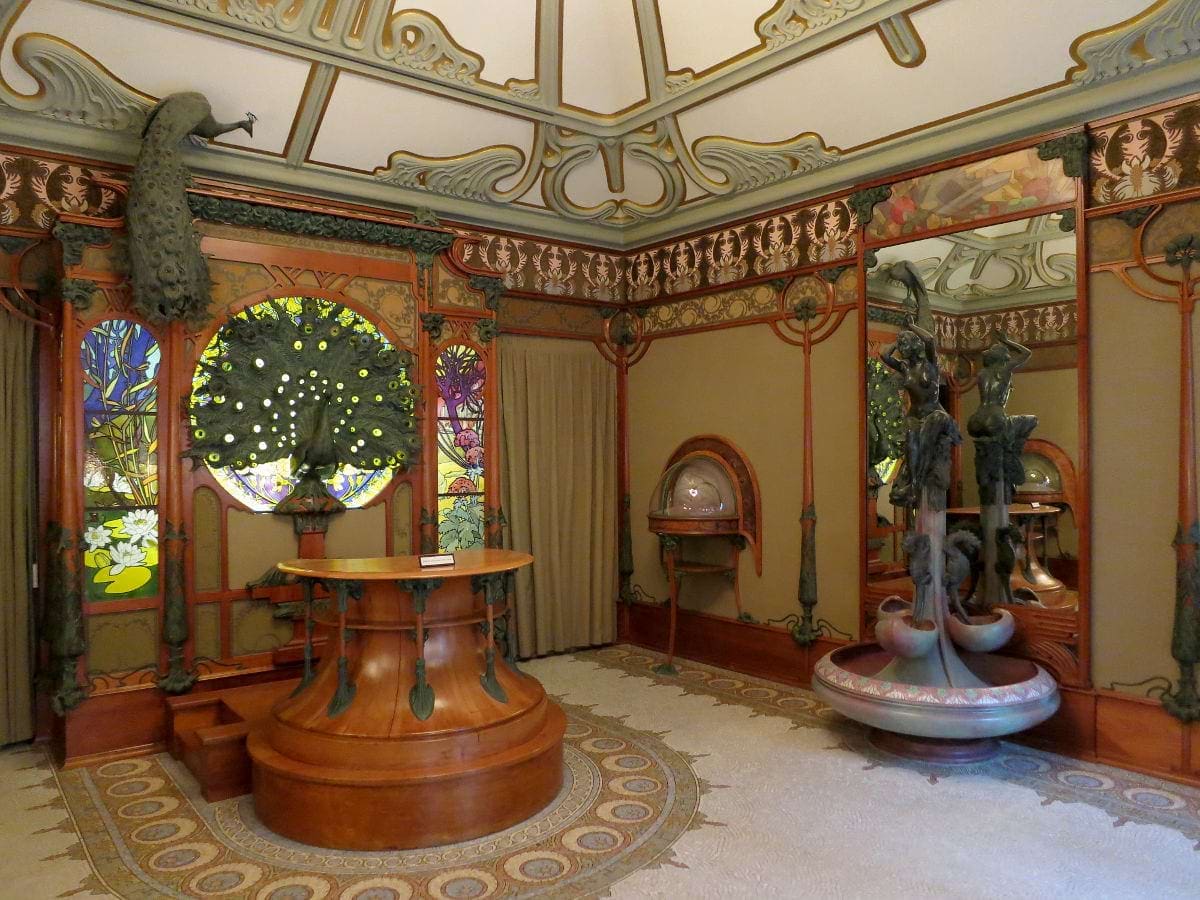
Alphonse Mucha for Boutique Fouquet
Source: Wikimedia Commons
Specifically in jewelry, the movement emphasized semi-precious stones and materials. Gems like opal and moonstone were favored over diamonds and sapphires, materials like brass or enamel were used as often as gold. The preceding period of the Second Empire (1852-1870) had brought discoveries of new diamond mines, fueling the desire and availability for that stone. This diminished the role of the jeweler, as the focus of jewelry from this period was on the size and clarity of these new diamonds, rather than the design. The Art Nouveau period developed in opposition to those notions, and the compositions of the period were created as if, “money was no longer a substitute for beauty.” (Rheims, The Flowering of Art Nouveau, 352)
The Art Nouveau jewelry style focused on the color, iridescence, sheen, and the harmony of the design; not on the monetary value of the materials used. Jewelers were freed to use the full range of materials to create their glittering, fantastical representations of Ophelia-like women with flowing hair, dragonflies with wings like stained glass windows, mythical creatures, and free-flowing vegetale forms, unrestrained from the bounds of previous eras.
In America, Newark, New Jersey, became the hub of Art Nouveau jewelry. Many prominent American Art Nouveau jewelers were based there including the Riker Brothers, Henry Blank & Co., Brassler and more. Newark and Providence, Rhode Island mass-produced jewelry in the Art Nouveau style for the middle class. While the jewelry produced was not cheaply made, it was still affordable to the middle class of the time.
The Newark jewelry industry worked to bring peace of mind and ease to Americans who were wary of luxury goods produced in the United States. By the 1870’s, Newark, “developed a $5,000,000-a-year industry, responding to consumer demand through the coupling of exquisite workmanship and technological innovation. Its reputation for quality and style was so widespread that its products were sold all over the world.” (American, Riker Brothers.) This bolstered the reputation of American luxury goods, both at home and abroad.
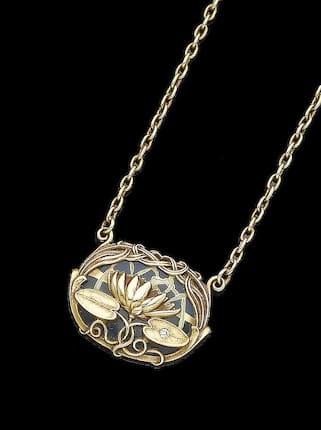
An art nouveau enamel and diamond-set pendant necklace, by Riker Brothers, circa 1910, Bonhams.
The Riker family, of Dutch immigrant origin, was involved in a variety of partnerships with other jewelers beginning in 1846 and culminating in the Riker Brothers in 1892. (Antique Jewelry University, “Riker Brothers.”) The firm was known for their pliqué-a-jour enameling, gold and platinum jewelry, and their fantastical griffin, dragon and other winged creatures and motifs. William Riker is credited with the creation of several innovative patents on the machines and techniques that produced the various surface textures of Riker jewels. Art Nouveau enameling was a complex process and many European jewelry houses sent out their designs to an enamel specialist. The Riker Brothers did their enameling in house, thanks to William’s innovations. Riker Brothers enamel work was known for its bold and rich blues, reds and greens as well as the depth of texture created by their techniques, perfectly mimicking the feathers or scales of their mythical creatures.
Lot 189 is a shining example of the Riker Brother’s work. The brooch is rendered in 14 karat yellow gold, with a bloomed finish. The central element is an opal, a favorite choice for Art Nouveau jewels, set in a gold bezel with milgrain details. The opal is flanked by two gradient blue enamel wings, shimmering from a rich royal blue at the center to light azure at the tips. The enamel wings are textured as if composed of individual feathers. The top boundary of the wings is lined in thick gold, also rendered as delicate feathers. The central opal is surmounted by an approximate .10 ct diamond. The piece is marked “14k” with the Riker Bros. maker’s mark (scimitar with R) on the reverse of the wings. The brooch clasp on the back is C-closure and at the back of the opal is a hidden gold bale formed by an Art Nouveau style whiplash line.
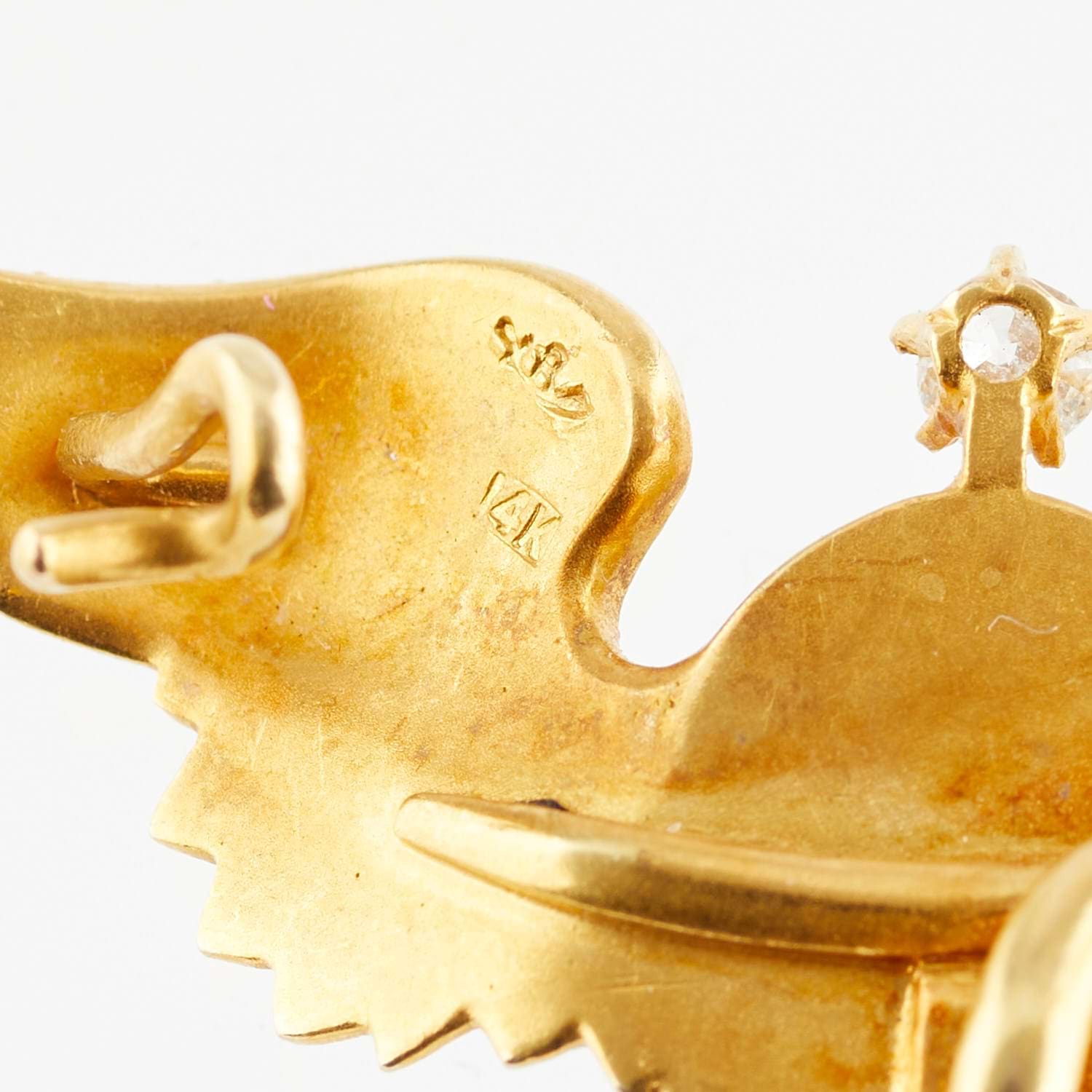
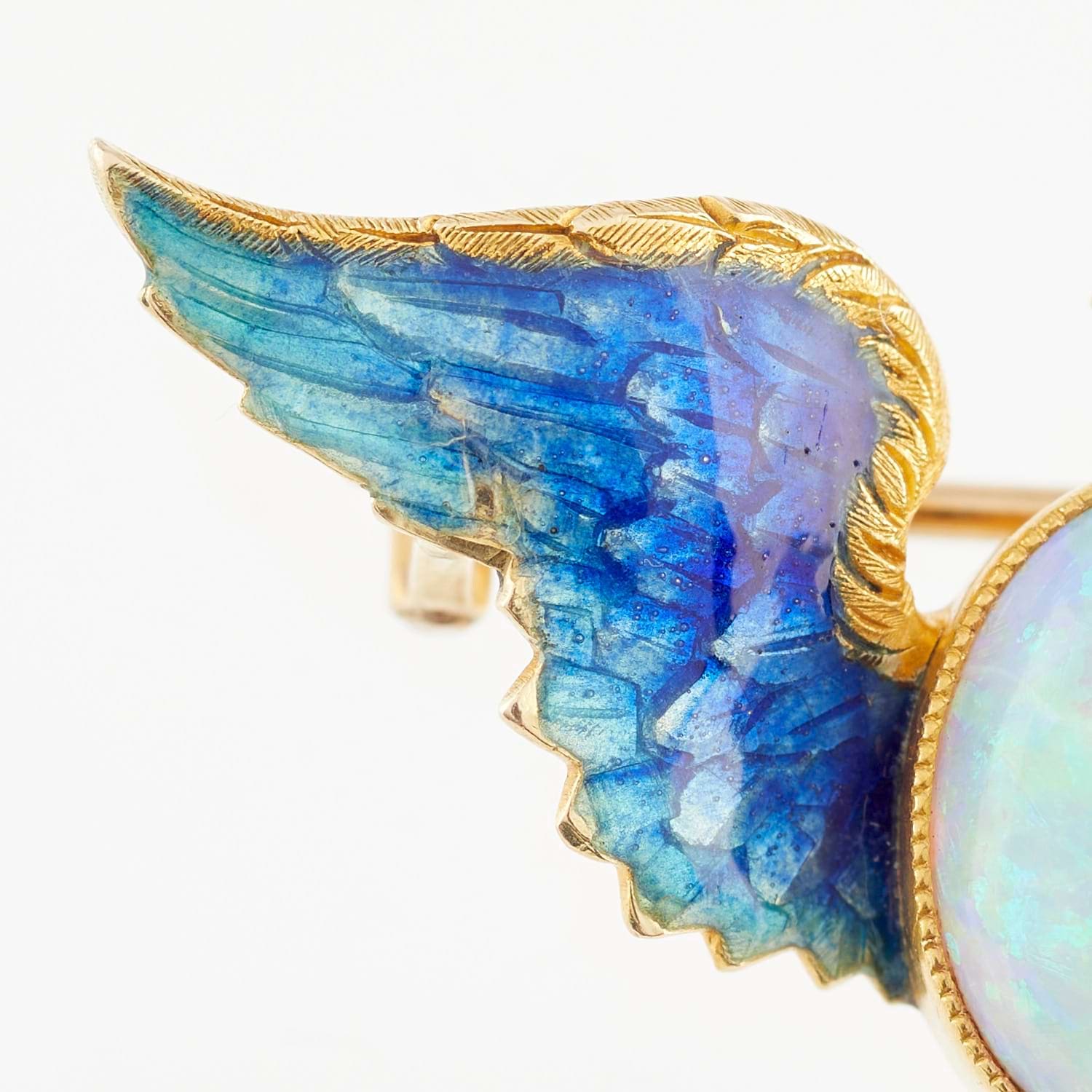
Pieces by the Riker Bros. are housed in prestigious museums, like the Metropolitan Museum of art, as well as the Newark Museum of Art.
Riker Brothers jewelry has also been offered by prestigious international auction houses. In March 2009, Skinner offered a brooch of the same design as our upcoming lot.
Below are examples of other significant Riker Brothers’ pieces from past auctions.
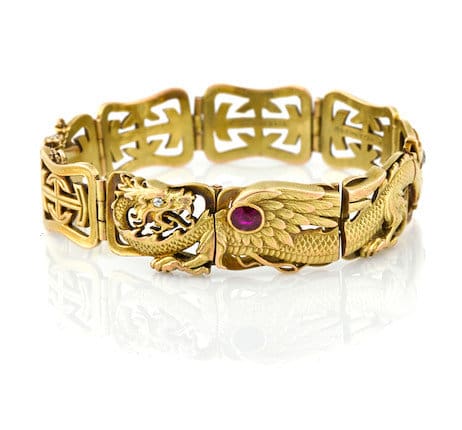
A ruby and diamond Asian dragon motif bracelet, Riker Brothers, circa 1915, Bonhams.
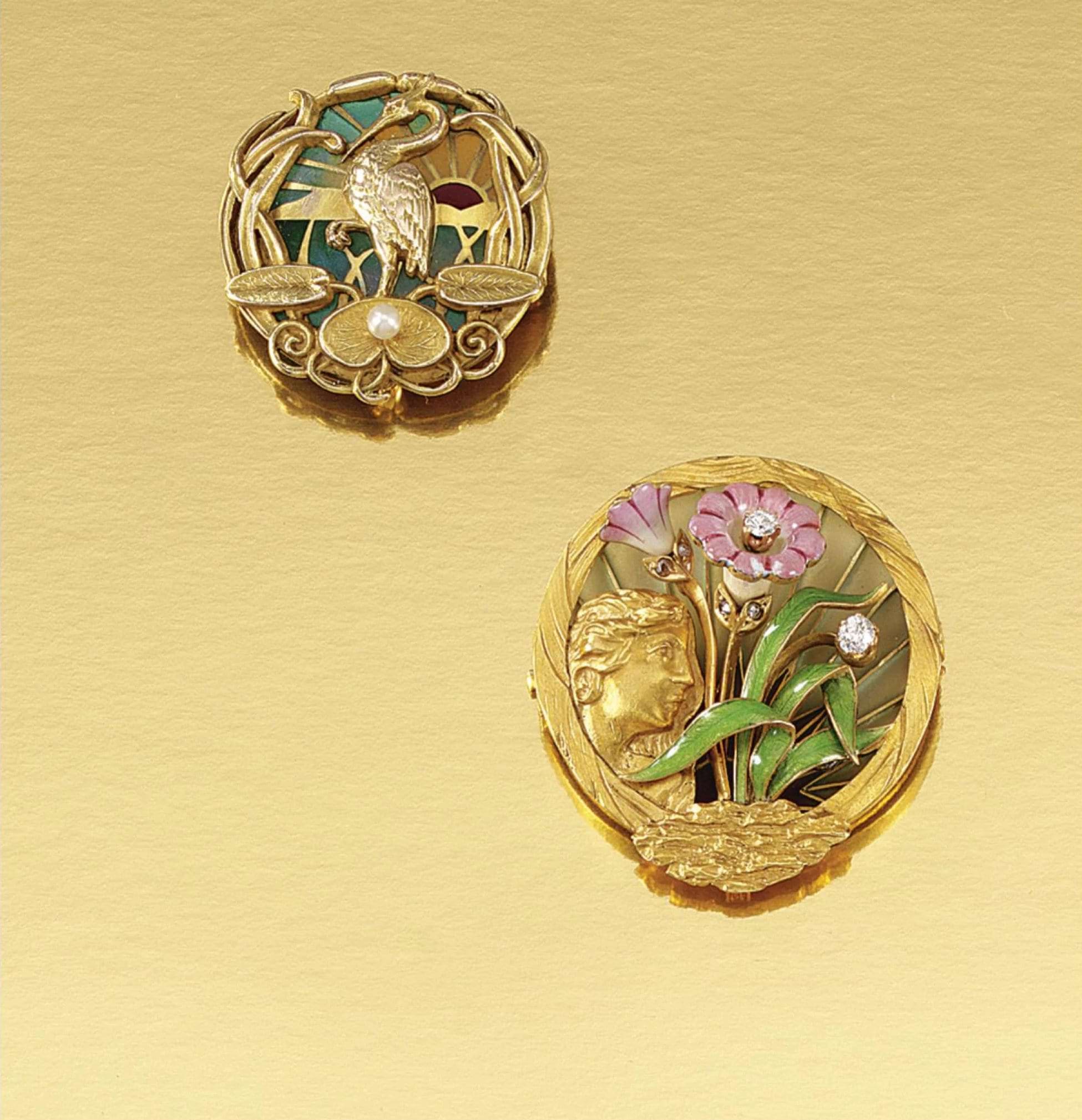
Two Gold Enamel, Pearl And Diamond Brooches, Early 20th Century, Sothebys.
Bidding for lot 189 opens January 23 at 10am. Don’t miss your chance to bid on this piece of Art Nouveau and American jewelry history.
Find more information on how to bid here: https://www.revereauctions.com/buying/
We are currently accepting jewelry consignments for our May Fine Jewelry sale. Interested in receiving a complimentary free auction estimate?
